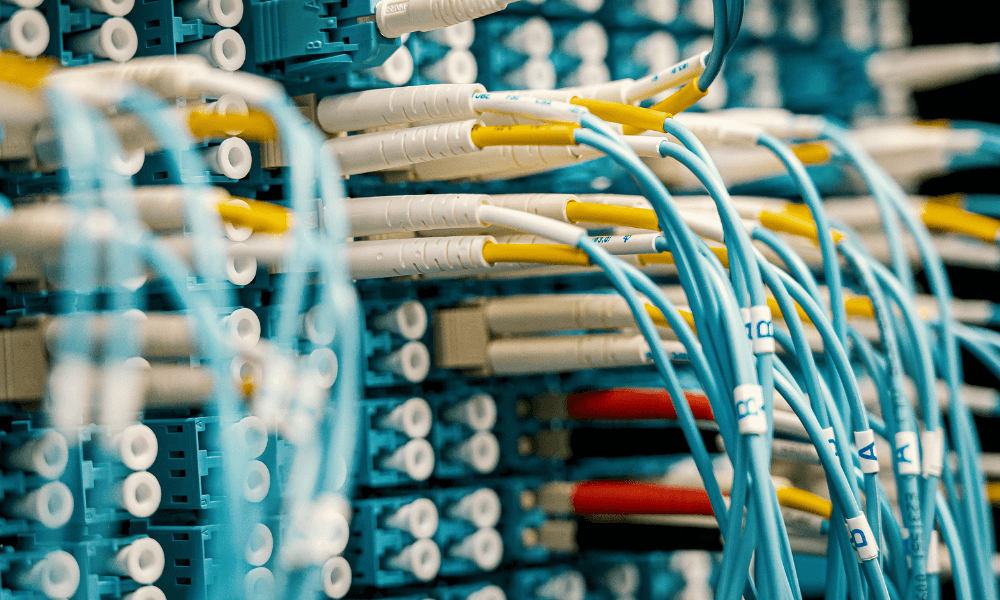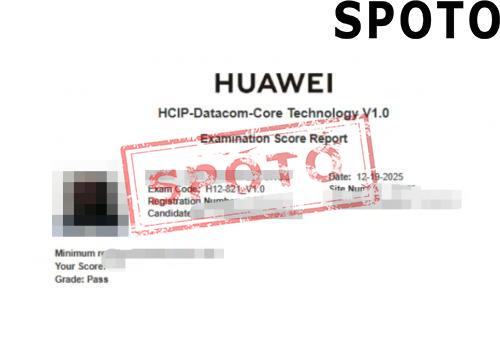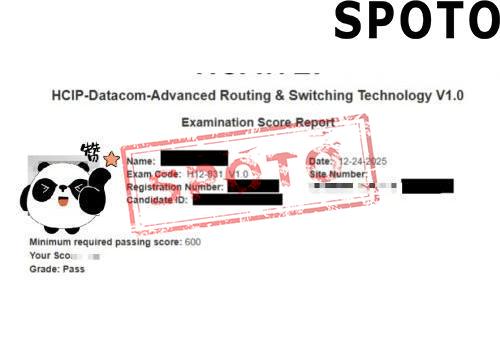
Table of Contents
With the rapid advancement of network technology, traditional Cat 5e (Category 5 Enhanced) cables can no longer meet the increasing demand for bandwidth. To address this, Cat 6 (Category 6) and Cat 7 (Category 7) cables have emerged as the mainstream choice for modern network cabling. These newer cable types offer higher transmission rates, stronger anti-interference capabilities, and longer transmission distances compared to their predecessors.
Cat 6 cables are capable of supporting transmission rates up to 10 Gbps, while Cat 7 cables are further enhanced with a combined attenuation-to-crosstalk ratio of at least 500 MHz and an overall bandwidth of 600 MHz, enabling transmission rates of 10 Gbps and beyond.
In this context, Cisco, the world's leading network equipment manufacturer, strategically combines its routers, switches, IP phones, and other equipment with Cat 6/7 cables to provide robust support for building high-performance networks. The high performance of Cisco's equipment, coupled with the high-speed transmission capabilities of Cat 6/7 cables, not only meets the current network needs but also lays a solid foundation for future network upgrades and expansions.
I. Network Cabling Basics
In building a modern network infrastructure, network cabling is the cornerstone of device-to-device connectivity, data transfer, and network expansion. High-quality network cabling not only ensures the speed and stability of information transmission, but also directly affects the reliability of the entire network system and the ability to upgrade in the future. As technology continues to advance, the standards for network cabling are constantly being upgraded to accommodate the increasing demand for data transmission.
1.1 The Importance of Network Cabling
- Data Transfer Rate: The network cabling determines the rate at which data is transmitted. High-quality cabling can support higher data transfer speeds to meet the needs of modern high-speed networks.
- System Reliability: Good cabling design can reduce signal attenuation and interference, and improve the stability and reliability of the network.
- Network Scalability: Flexible cabling solutions support network expansion and upgrades to adapt to changing network needs.
- Cost-Effectiveness: A one-time investment in a high-quality cabling system can reduce long-term maintenance and upgrade costs.
- Security: Proper cabling can prevent electromagnetic interference and data breaches, and protect network security.
1.2 Development of Different Types of Cables
- Cat 5e (Category 5 Enhanced): Cat 5e is the early and widely used network cabling standard, supporting transfer rates up to 1 Gbps for early Gigabit Ethernet.
- Cat 6 (Category VI): The introduction of Cat 6 cables increases transmission rates to 10 Gbps, while enhancing immunity to interference and supporting longer transmission distances.
- Cat 6a (Enhanced Category VI): An improved version of Cat 6, Cat 6a supports higher transmission performance and is capable of maintaining 10 Gbps over longer distances.
- Cat 7 (Category 7): Cat 7 cable is one of the highest level network cabling standards available, providing a combined attenuation-to-crosstalk ratio of at least 500 MHz and an overall bandwidth of 600 MHz, supporting transmission rates above 10 Gbps.
1.3 Impact on Network Performance
- Transmission Rates: As the category increases, the transmission rates supported by the cable also increase significantly to meet the needs of higher bandwidth applications.
- Immunity to Interference: Cables of higher categories are usually shielded more tightly to reduce the impact of electromagnetic interference on data transmission.
- Transmission Distance: High-class cables are able to maintain high-speed data transmission over longer distances, making them suitable for large-scale network environments.
- Compatibility: New cables are typically backwards compatible, but for optimal performance, they need to work with the appropriate class of network equipment.
Through the continuous optimization of cabling materials and design, the development of network cabling technology provides a strong physical foundation for modern networks, ensuring the efficiency of data transmission and the adaptability of the network environment. With the proliferation of high-class cables such as Cat 6 and Cat 7, modern network infrastructure can support a wider range of applications, including high-speed data centers, complex enterprise networks, and industry-specific applications that require extreme bandwidth and stability.
II. Cat 6 Cables Overview
Cat 6 cables, with their superior performance and wide range of applications, have become one of the mainstream choices for modern network cabling.
2.1 Technical Specifications
- Transmission Rates: Cat 6 cables support transmission rates of up to 10 Gbps, which allows them to meet the needs of most current high-speed network applications.
- Frequency Range: The Cat 6 cable has a frequency range of 250 MHz, which is capable of transmitting higher frequency signals than the 100 MHz of the Cat 5e, thus supporting higher data rates.
- Interference Immunity: Cat 6 cables are typically designed with four twisted pair wires, which provide better isolation between each pair, reducing crosstalk (NEXT, Near End Crosstalk) and return loss. In addition, Cat 6 cables may contain shielding layers that further increase their resistance to electromagnetic interference.
- Structural Design: Cat 6 cables are designed with signal integrity in mind, improving the overall performance of the cable by increasing the Transmission Distance: Cat 6 cables are capable of supporting up to 55 meters at 10 Gbps and longer at 1 Gbps.
2.2 Application Scenarios
- Gigabit Ethernet: Cat 6 cables are ideal for Gigabit Ethernet, providing enough bandwidth and stability to support high-speed data transfer.
- Enterprise Networking: In enterprise environments, Cat 6 cables are commonly used to connect servers, workstations, switches, and other network devices to ensure efficient network operation.
- Data Centers: Cat 6 cables play an important role in the cabling system of data centers, enabling high-speed data exchange between servers.
- Multimedia Applications: With the abundance of multimedia content, Cat 6 cables are capable of supporting high-definition video streams and fast transmission of large files, making them suitable for multimedia conference rooms and video surveillance systems.
- Network Upgrades: Cat 6 cables are a cost-effective solution for organizations looking to upgrade their existing networks to support higher bandwidth and future technology developments.
- Smart Home and Internet of Things (IoT): As smart home and IoT devices become more widespread, Cat 6 cables are capable of supporting the high-speed and stable connectivity required for these devices.
III. Cat 7 Cables Overview
The Cat 7 cable represents the latest advancement in network cabling technology, with significant improvements in transmission rates, frequency ranges, and protection against electromagnetic interference. The following is a detailed description of the technical advancements and physical structure of Cat 7 cables.
3.1 Technological Progress
- Transmission Rates: Cat 7 cables support transmission rates of at least 10 Gbps, and some high-performance Cat 7 solutions can support even higher speeds to meet the extreme speed demands of future networks.
- Frequency Range: Cat 7 cables have a frequency range of at least 500 MHz, and some products can even reach 600 MHz, far exceeding the 250 MHz of Cat 6, providing a wider frequency bandwidth for high-speed data transmission.
- Future Compatibility: Due to its high frequency range and transmission rate, Cat 7 cables provide compatibility for higher rate network technologies that may emerge in the future, ensuring the long-term effectiveness of the network infrastructure.
- Applications: Cat 7 cables are designed not only for traditional Ethernet connections, but also for transmission of audio, video, and other multimedia applications, opening up more possibilities for cabling systems.
3.2 Physical Structure
- Double-Shielded Design: Cat 7 cables are typically shielded with Twisted Pair (SFTP) or Double-Shielded Twisted Pair (S/FTP), where each pair has a separate shield, and there is a common shield on the outside, which significantly improves the cable's immunity to interference.
- Electromagnetic Interference Protection: Cat 7 cables are highly protected against electromagnetic interference (EMI) and radio frequency interference (RFI) due to the presence of shielding, ensuring signal integrity and transmission quality.
- Wire Size and Construction: Cat 7 cables typically have larger wire sizes and more complex structures due to their shielding and high-density pair design, which makes Cat 7 cables physically stronger, but also introduces higher manufacturing costs and installation difficulties.
- Connectors: Connectors for Cat 7 cables, such as RJ45 plugs, are also often shielded, ensuring electromagnetic compatibility throughout the connection system.
- Environmental Adaptability: The physical structure of the Cat 7 cable allows it to maintain stable performance in a variety of environments, especially in industrial environments with high electromagnetic interference or high-density equipment environments.
IV. Synergies between Cat 6/7 Cables and Cisco Equipment
In the process of building a modern network, high-performance network cabling combined with advanced network equipment is the key to achieving high-speed and stable connectivity. Cat 6 and Cat 7 cables, with their superior specifications, have become the perfect match for working with Cisco devices. Cisco, the world's leading supplier of networking technology, combines its equipment with Cat 6/7 cables to improve network performance, system stability, and future scalability.
4.1 Performance Improvements
- High-Speed Data Transmission: The combination of Cat 6 and Cat 7 cables with Cisco equipment enables high-speed data transmission in the network. The 10 Gbps rate supported by the Cat 6 cable is sufficient for most enterprise applications, while Cat 7 cables push this rate even further, opening up more possibilities for future network applications.
- Stability Enhancements: Cisco devices are known for their high stability and reliability, and with the high-quality connection of Cat 6/7 cables, packet loss and errors during data transmission can be significantly reduced, improving the overall stability of the network.
- Immunity: The double-shielded design of the Cat 7 cable, combined with the advanced signal processing technology of Cisco equipment, effectively reduces the impact of electromagnetic interference on network performance, especially in complex electromagnetic environments.
- Compatibility and Interoperability: Cisco devices support a wide range of Ethernet standards, and the combination of Cat 6/7 cables ensures compatibility and interoperability between different devices and systems, reducing the complexity of deployment and maintenance.
4.2 Potential Value
- Above 10Gbps: Cat 7 cables provide Cisco devices with the ability to support speeds above 10 Gbps, which is critical for data centers, cloud services, and high-speed computing environments that need to process large amounts of data.
- Preparing for Future Network Technologies: As network technologies evolve, such as 25 Gbps Ethernet, 40 Gbps Ethernet, and more, the high frequency bandwidth of Cat 7 cables provides the foundation for Cisco equipment to support these future technologies.
- Long-term Investment Protection: The combination of Cat 7 cables and Cisco equipment protects your business's long-term investment from frequent changes in cabling systems due to technology upgrades.
- Cabling Solutions: The versatility of Cat 7 cables allows them to support not only data transmission, but also voice, video, and other multimedia services, which, when combined with Cisco's unified communications and collaboration solutions, provide a comprehensive network infrastructure.
- Intelligent Networking: The combination of Cisco devices and Cat 6/7 cables provides the physical foundation for building intelligent networks that support the application of emerging technologies such as the Internet of Things (IoT) and artificial intelligence (AI).
Conclusion
In summary, the combination of Cat 6/7 cables and Cisco equipment represents a strategic convergence of high-performance network cabling and advanced networking technologies. This synergy not only addresses the current demands of modern networks, but also lays a solid foundation for the intelligent, efficient network world of the future.
To meet the growing and evolving needs of our networks, it is crucial to choose the right cables and equipment that can support these requirements. The superior specifications of Cat 6 and Cat 7 cables, coupled with the renowned reliability and capabilities of Cisco's networking solutions, create a powerful and future-proof network infrastructure.
This comprehensive approach ensures that the network can handle high-speed data transmission, maintain system stability, and provide robust protection against electromagnetic interference. Moreover, the forward-compatibility of Cat 7 cables and the continuous innovation of Cisco equipment safeguard the long-term investment in the network, allowing it to adapt and scale to support emerging technologies and applications.
By making a strategic choice to combine these leading-edge network cabling and equipment technologies, organizations can future-proof their network infrastructure and position themselves for success in the ever-evolving digital landscape. This synergy represents a strategic commitment to building intelligent, efficient, and scalable network environments that can meet the demands of today and tomorrow.










